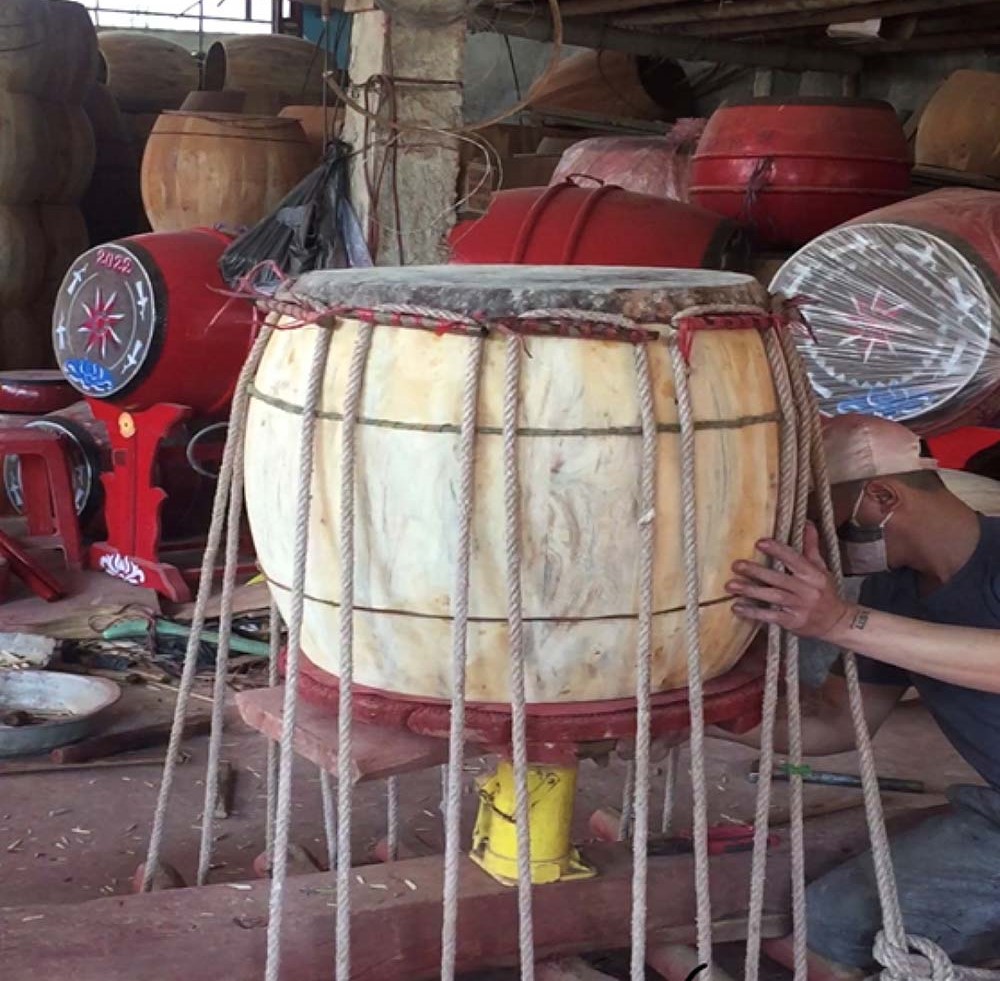
Doi Tam Drum Village - The sound of thousands of years of drums
Doi Tam drum making village is located at the foot of Doi mountain, one of the mountains with a beautiful position in Ha Nam. This is also the place where the two largest Thunder drums in Vietnam are produced and the festival drum rig serving the 1,000th anniversary of Thang Long - Hanoi.

Old people and young children in Doi Son all know by heart the legend of the two brothers, the ancestors of the craft village, Nguyen Duc Nang and Nguyen Duc Ban. When they heard that King Le Dai Hanh was about to return to the village to hold a ceremony to promote farming, the two men immediately went home to cut down a jackfruit tree for wood, and use buffalo meat to use skin to make a drum to welcome the king.

In the spring of 987, King Le Dai Hanh went down to the fields to perform the land reclamation ceremony at Doi Son to the sound of drums from the Nang and Ban brothers. It was also because of the thunderous sound of the drums that later they were honored as Trang Sam and Doi Son, a rare craft village that still remembers the birth and death years of the craft's ancestor Nguyen Duc Nang (925-990).

Doi Tam drum village has a tradition that is passed down from father to son. Boys in the village usually learn how to make drums at the age of 12 or 13, and when they are 14 or 15 years old, they will follow their grandfather and father everywhere to make drums. People in the village keep hearing the sound of the Doi Tam drum as if hearing the beating of their own hearts. The craft of making drums has permeated every vein and fiber of the artisans.

The drums of Doi Tam village are special products with many functions such as: altar drums, folk art drums, drums used as information transmission tools... Therefore, drums are products with historical value. , culture and arts.

To make a complete drum, Doi Tam artisans work very hard and meticulously with three important steps: making the skin, making the funeral, and carrying the drum. The drum maker summed up his drum-making experience through the song: "Buffalo skin tangs with jackfruit, plays less, makes more noise."

Drum skins are made of buffalo leather. The layer of buffalo skin is shaved thin and then dried. The drum is made of curved dried jackfruit wood. Each different tree is divided into many different chips. Then, the worker will bond the chips to form a closed, tight and round drum. In addition, drum chips should not be connected because it will affect the sound of the drum.

Carrying the drum is the most difficult step, not just stretching the buffalo skin onto the surface of the drum and then using bamboo nails to fix it on the drum body. Carrying the drum also requires the people of Doi Tam drumming village to have sensitive ears to assess which notes the drum sounds are attached to.

Doi Tam Drums come in many different types and prices, ranging from a few hundred to several million VND. Depending on customer requirements, artisans produce drums of different sizes. Buyers can order special drums at prices that can reach tens of millions of dong.

In addition, diversifying products, taking advantage of drum making techniques to convert to producing related products such as making wine barrels, biological bathtubs, feng shui rice containers... has helped Doi Tam Phat drum village. promote traditional professions and preserve the thousand-year-old profession of our ancestors.
